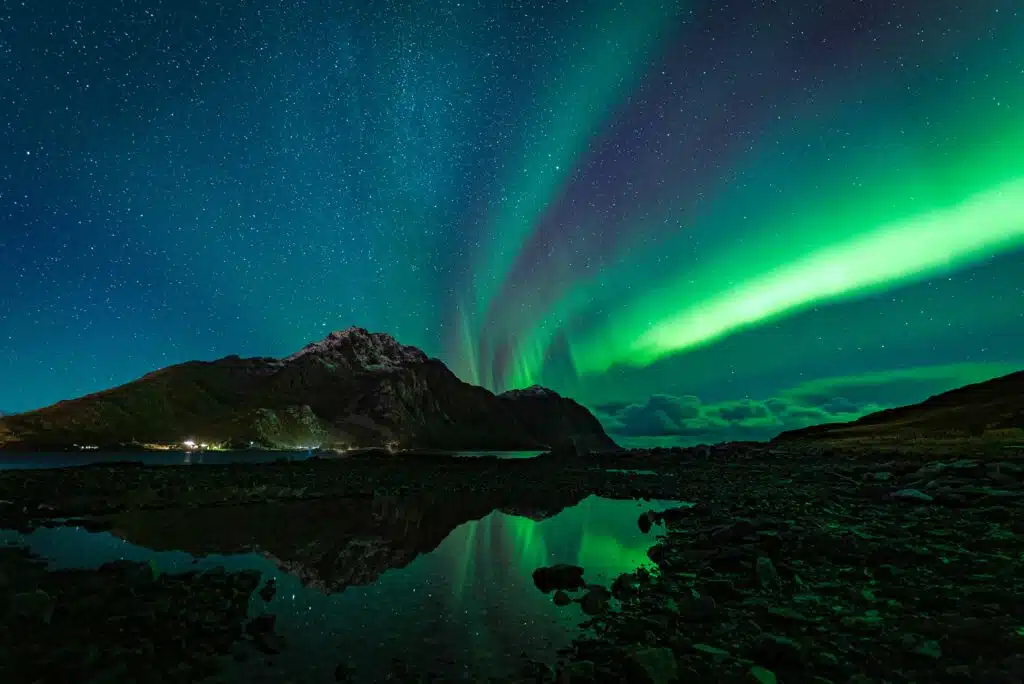Life in the Polar Night: how north Norwegians survive in the darkness

Each year, north Norway experiences a unique natural phenomenon known as the polar night, a period when the sun remains below the horizon for weeks or even months, depending on how far north you dare to go. This extended darkness presents a fascinating challenge to the locals, shaping their lifestyle, traditions, and strategies for survival.
Understanding the Polar Night
The polar night occurs due to the tilt of the Earth’s axis, plunging regions near the North Pole into prolonged darkness during winter months. In places like Tromsø, Bodø, and Hammerfest, the sun disappears from the sky for an extended period, casting the landscape into a deep twilight.
Adaptations and Survival Strategies
1. Artificial Lighting
Light becomes a precious commodity during the Polar Night. To combat the darkness, north Norwegians rely heavily on artificial lighting. Homes, streets, and workplaces are illuminated with bright lights, mimicking daylight to maintain a sense of normalcy. It is commonplace for homes to use ‘daylight lamps’ or ‘light therapy lamps’, which mimic the brightness of sunlight. The daily cycle of light and dark helps the brain regulate the body’s circadian rhythm, causing sleepiness at night and wakefulness in daylight.
2. Utilising Natural Light
Despite the sun’s absence, north Norwegians make the most of natural light during the few hours of dawn-like twilight known as ‘the blue hour’ or ‘blåtimen’, which falls around midday during the Polar Night. This period, where the sky takes on an inky blue hue, offers a brief but cherished glimpse of natural light.
3. Outdoor Activities
Contrary to expectations, the Polar Night doesn’t deter outdoor activities. Far from it! Locals embrace winter sports like cross-country skiing, snowshoeing, ice skating and even dog sledding under the glow of the moon, which can be very bright on clear days, especially when there is plenty of crisp white snow to reflect off. Norwegians are famous for their saying: ‘ingenting som dårlig vær, bare dårlig klær’ (there’s no such thing as bad weather, only bad clothing).
4. Cultural Festivities
The Polar Night doesn’t dampen the spirit of celebrations in north Norway. Festivals and cultural events, such as the Northern Lights Festival in Tromsø, occur during this period, providing a sense of community and vibrancy.

5. Diet and Nutrition
Nutrition plays a vital role in combating the winter blues. Traditional Norwegian cuisine includes hearty meals rich in fish, vegetables, and starchy roots, providing essential nutrients and energy during the long, dark days. Of course, making sure we have a daily dose of seaweed during this time also ensures that we have a reliable, natural source of vitamins and minerals, to keep us healthy.
Many also choose to supplement their regular diets with a Vitamin D supplement, as the best source of Vitamin D is exposure to UVB radiation from the sun. Vitamin D also happens to be one of the only vitamins that is not present in seaweed, so it’s important for us to consider where we get ours from.
Coping with Psychological Challenges
The prolonged darkness of the Polar Night can have significant psychological effects. Seasonal Affective Disorder (SAD) is prevalent in regions with extended periods of darkness much further south than even southern Norway, and it can be especially impactful in the north. To combat this, north Norwegians employ various strategies:
- Light Therapy: As previously mentioned, daylight lamps mimic natural sunlight which stimulates the body’s production of serotonin, helping to combat the effects of SAD.
- Active Lifestyles: Engaging in regular physical activities and social interactions helps alleviate feelings of isolation and depression.
- Cultural Engagement: Participation in cultural events and communal activities fosters a sense of belonging and community support. It is common for communities to take care of each other during this time, checking on neighbours and friends to ensure everyone is coping well enough.
Environmental Impacts
The Polar Night influences the ecosystem, impacting flora and fauna. Wildlife, including reindeer and certain bird species, adapt by altering their behaviour, such as changes in feeding patterns or migration routes.
Architectural Innovations
Architecture in North Norway is designed to accommodate the Polar Night. Buildings often incorporate large windows to maximise natural light and utilise insulation techniques to retain warmth during the harsh winter months.
Scientific Exploration and Research
The Polar Night serves as a unique opportunity for scientific research. Scientists study various phenomena, including the aurora borealis (Northern Lights) and celestial bodies, taking advantage of the extended darkness for astronomical observations and experiments.
Cultural Significance
The polar night is deeply ingrained in north Norwegian culture and folklore. Traditional stories and legends often revolve around this period, with tales of mystical creatures and the ethereal beauty of the Northern Lights.
The Beauty of the Polar Night
Despite its challenges, the Polar Night holds a unique allure. A display of the Northern Lights across the dark sky are enjoyed by everyone, whether it’s your first or 100th time of viewing them. Even listening to an arctic storm battering against your window as the fire crackles in the fireplace can feel very cozy indeed!
Cultural References
The 2007 horror film 30 Days of Night is set during the Polar Night, in a small town in northern Alaska, USA. In the movie, most of the town’s residents head south for the winter, but some townspeople remain behind. Those that stay soon regret their decision when, one year, hungry vampires descend on the town, and the human residents find themselves in a fight for survival in the night that never ends. Luckily, there are no vampires in Lofoten… that we know of!
Conclusion
Life during the Polar Night in north Norway is a testament to human resilience and adaptation. Through a blend of traditional practices, modern innovations, and a deep connection to nature, north Norwegians not only survive but also thrive in the midst of extended darkness. This unique phenomenon, rather than being a hindrance, shapes a rich tapestry of culture, traditions, and a way of life.